Exploring Dragon Fruit Varieties: Our Quest for the Perfect Fruit
It seems like my garden is turning into a mini dragon fruit farm! My wife and I started growing dragon fruit a few years ago as a fun experiment. We didn’t know much about it at the time, but after eating it daily during a trip to Taiwan, where it was cheap and plentiful, we were hooked.
Over the past year or so, we’ve started seeing more flowers and fruit. We’ve discovered we prefer the deep purple-fleshed varieties because they’re sweeter than the white-fleshed ones. We haven’t tried the pink-fleshed ones yet.
Now we’re getting more interested in the specific varieties we’re growing. Most of our dragon fruit came from Home Depot or random clippings from friends, so we’re eager to learn more about what types we actually have.
To explore this further, I joined a local Facebook group for dragon fruit enthusiasts in my area. Southern California's great weather is ideal for growing dragon fruit, so there are quite a few people involved in growing dragon fruit nearby. I found someone with an impressive collection of dragon fruit varieties, and we met up to chat about growing techniques and the different types of dragon fruit. I ended up buying a few clippings from him and even got a couple of smaller ones for free!
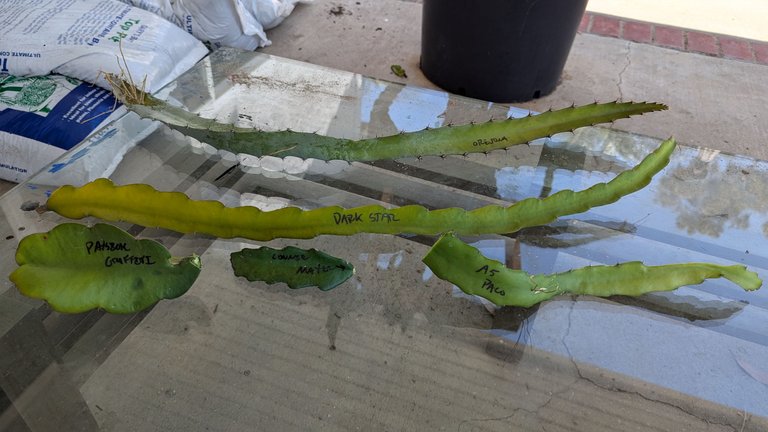
Out of the five clippings I received, two just needed a day to scab over since they were cut at the node, which is the space between the fleshy parts. The other three weren't quite ready yet. The smaller ones need a bit more time to scab over. One clipping, the Asunta 5 “Paco”, however, was cut at the thicker part rather than the node, so I need to wait for that one to scab over completely before transplanting it into the soil to prevent it from rotting.
I want to take my time to get it right because the Asunta 5 “Paco” is one of the more sought-after varieties, known for its exceptionally delicious fruit.
We’re trying a new planting medium recommended by Gary Matsuoka. He suggests using all inert materials because many commercial soils contain compost. Over time, as the compost breaks down, it can lead to issues like root rot and make the soil muddy, especially for plants that will stay in pots long-term.
Right now, our cuttings are in that soil, and once they start to root, we’ll transplant them into larger pots with the same planting medium called Gary's Best Top Pot. We’ll then add some compost and fertilizer on top, water it, and let it break down and integrate into the medium, mimicking natural processes.
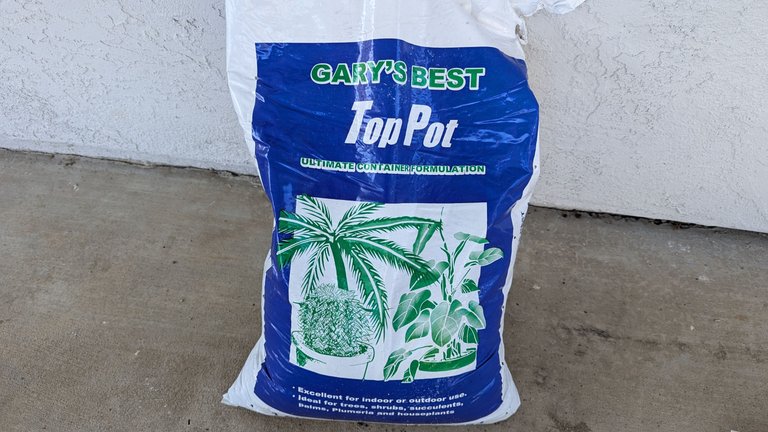

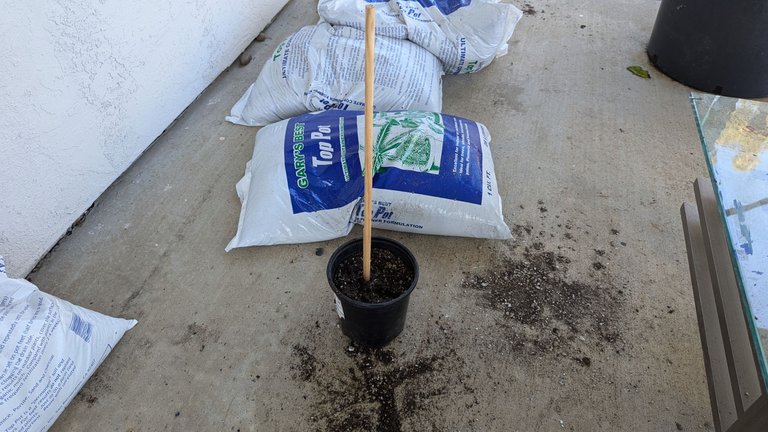
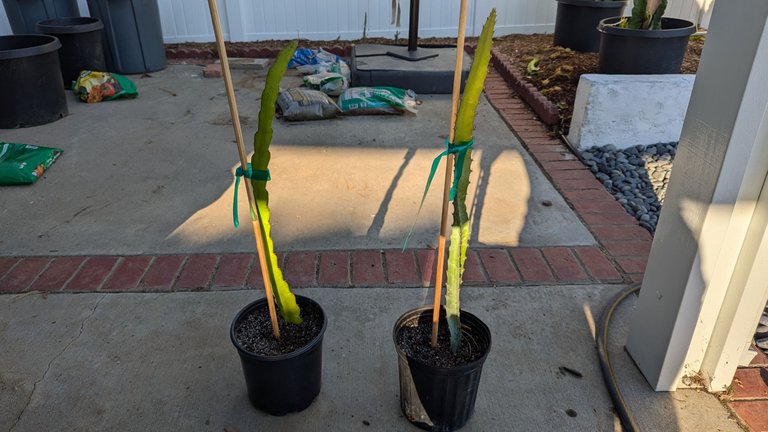
If these cuttings do well, we might consider replacing the soil in our current dragon fruit pots. However, that could be a challenge since the plants are likely root-bound. We had planted four in each 20-gallon pot, and they quickly became overcrowded. For future pots, we plan to plant just two per pot to see how they fare.
Currently, our dragon fruit plants are producing a lot of flowers, and we’ve finally started to see plenty of fruit setting. Now, we're just waiting for it to ripen.
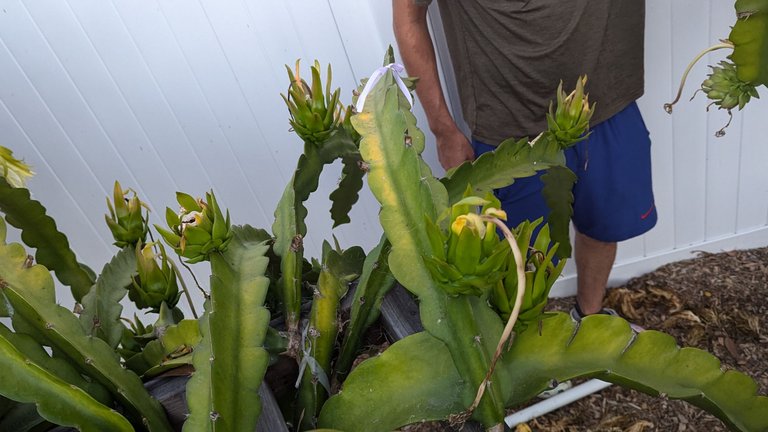
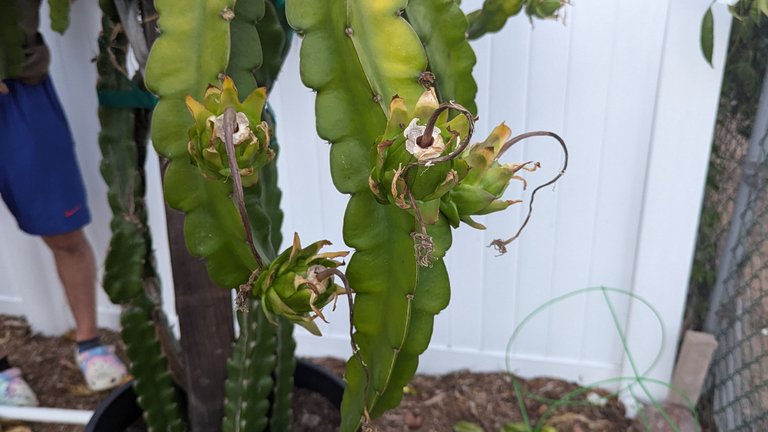
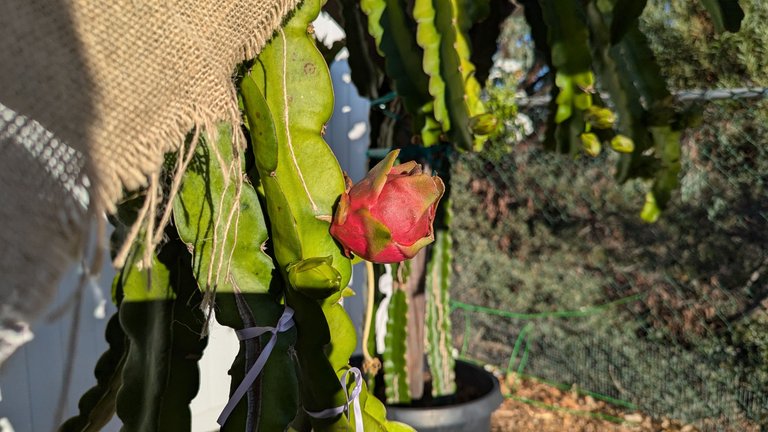
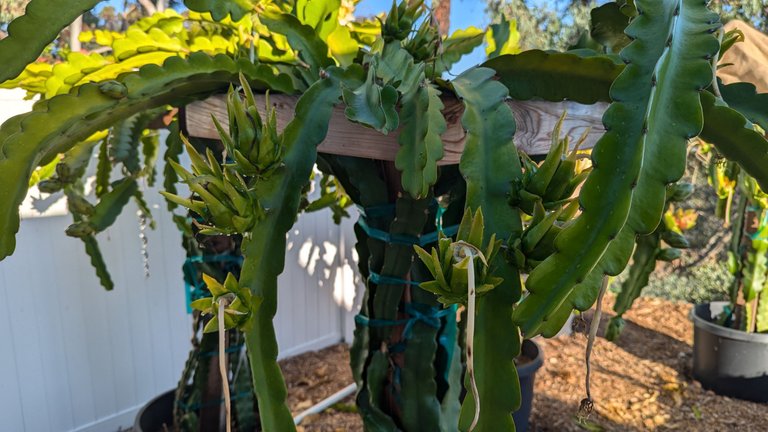
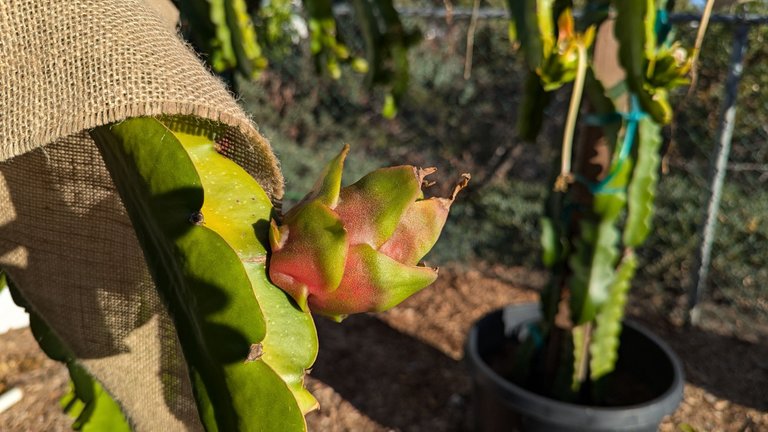
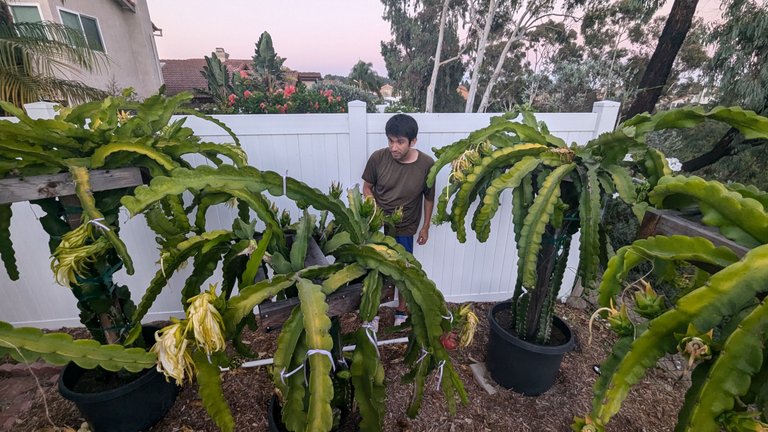
I really wish we knew the varieties of dragon fruit we have, but unfortunately, we don’t. We’re giving the white-fleshed dragon fruit one more try this year. Last year, they had almost no sweetness and barely any flavor, which might have been due to the extra rain affecting the fruit. If they still don’t turn out well, we might replace them with varieties we prefer.
If anyone has any favorite dragon fruit varieties, I’d love to hear about them. If they sound great, I’d be interested in getting some cuttings to grow my own. Please let me know your preferences!
Congratulations @bostonadventures! You have completed the following achievement on the Hive blockchain And have been rewarded with New badge(s)
Your next target is to reach 60 posts.
You can view your badges on your board and compare yourself to others in the Ranking
If you no longer want to receive notifications, reply to this comment with the word
STOPCheck out our last posts:
!LOL we put a few cuttings in a couple of month ago. We got them from a friend in the neighbourhood who has heaps too. A couple of years you recon. A bit of a wait but it might be worth it.
!LUV
!PIZZA
!INDEED
@bostonadventures, @new.things(1/10) sent you LUV. | tools | discord | community | HiveWiki | <>< daily
lolztoken.com
The bartender shouts Geto out of my pub! We don’t serve your type!
Credit: ifiwasfrank
@bostonadventures, I sent you an $LOLZ on behalf of new.things
(1/10)
Farm LOLZ tokens when you Delegate Hive or Hive Tokens.
Click to delegate: 10 - 20 - 50 - 100 HP
Yep, it usually takes about 2 years to see the first flowers or fruit. It might be quicker, but those cuttings look pretty new, so I'd expect it to be around 2 years. Do you have any plans for a trellis once they start growing?
$PIZZA slices delivered:
@new.things(1/15) tipped @bostonadventures
@bostonadventures! @new.things Totally agrees with your content! so I just sent 1 IDD to your account on behalf of @new.things. (1/5)
(html comment removed: )
)
This is pretty awesome, I’m not the biggest fan of dragon fruit but I do know how awesome it is to pick fresh foods right off!
It’s amazing how different the plants are in terms of species and varieties. For example one of the farms we love to visit has 15 varieties of blueberries! We had no idea there were that many, and apparently there’s over 45 varieties from what we’ve heard. Pretty wild stuff!
Hopefully the clipping you prefer ends up doing well and really stays. We have a similar challenge at our place where we have to use pots for our foods we are growing but it’s not terrible. Getting the right fertilizer is crucial.
What we’ve done to combat root rot is get the planters that have the bottoms on them that you can allow water to drain out. It works for most of it until the plant gets really big and the roots end up covering the holes where the water is supposed to come out. With our seasons, we don’t have to worry about that though haha. In southern Cali though you have much more consistent weather!
I had no clue there were over 45 types of blueberries! It’s crazy, I’ve only ever eaten the ones from the supermarket.
As for root rot, we haven’t had too many problems. We did have one issue, though. I think it was because the “soil” we used had a lot of compost in it, which turned into a muddy mess when it fully decomposed. Even with good drainage, it stayed way too moist for too long! Yeah, our weather is super consistent here. Makes it fairly easy to grow plants... normally!
Ya it’s funny when we water soil that’s a mix of top and compost and how it collapses to nothing haha then you have to add more to get it back up.
If you thought the blueberries was wild.. wait until you hear apples! Lol there’s hundreds of species of apples!